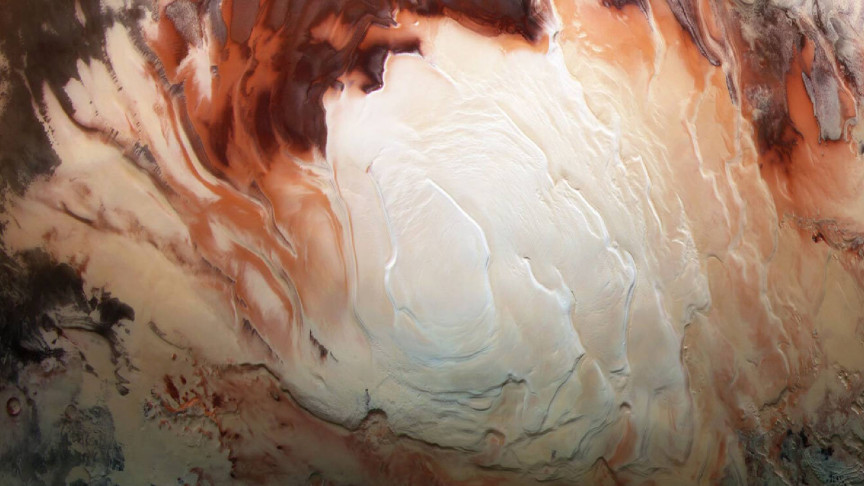
Scientists Just Unveiled New Findings About Life in Mars' Subsurface Lakes
Last June, we brought you the news that Mars' lakes may be widespread. We also specified that this didn't mean humans could easily survive on Mars, mainly because evidence indicated that many of the subsurface lakes were probably frozen. Notably, these frozen lakes were spotted on the Red Planet as early as 2018, and this earlier research indicated that the lakes may be liquid. However, even in their frozen state, that didn't preclude various forms of life from surviving (and thriving) in them. Now, a new study published this month in the Geophysical Research Letters reveals that the conditions around the south pole of the Red Planet, indeed, aren’t right for liquid water. Rather, they allegedly produce clay, squashing some more of the excitement surrounding the newly discovered "lakes."Of course, life is found in clay on Earth. In fact, some believe that it may have been the birthplace of life on our planet. We also see organisms swimming about in the cold depths at the bottom of the ocean, highly acidic lakes, and basically everywhere else we've looked on Earth. But Mars, as we all know, isn't Earth. So, what do these new findings mean about the chance of life on the Red Planet?"Bright radar reflections observed beneath the south polar layered deposits (SPLD) by the Mars Advanced Radar for Subsurface and Ionosphere Sounding instrument were interpreted to represent liquid water, but the required amounts of salt and heat to form and maintain liquids in this location are implausible given what is known about Mars," write the researchers in their paper."Here, we present another hypothesis that accounts for the bright reflections: hydrated and cold clay-rich deposits at the base of the SPLD create the observed radar response," they continue. In essence, what the authors are saying is that what was previously presumed to be water is just big and — likely — useless clumps of clay. Cold clay, specifically. So not exactly easily drinkable. Speaking about the likeliness of frozen water, Isaac Smith, a planetary scientist at York University and lead author of the new paper, told Gizmodo in an e-mail, “I really don’t believe that the lake idea holds water [Editor's note: We believe that this pun was intended and will update if we hear from the team], so an alternative was needed."We know that smectites are abundant on Mars, which is a type of clay mineral. These have previously been studied heavily by spectroscopists, so it stands to reason that they could be a viable explanation here as well. Smith notes that, to date, smectites have been mostly ignored by those in the radar community. Speaking about the next stage of this work, Smith notes that it is his hope that "we consider them more fully in the future and even revisit some of our previous work in light of these new results.”And if it really is smectites we've found? Well, a lot of research has discussed whether life can thrive in it on Mars, and life does live in it on Earth. So all hopes are not entirely dashed. Additionally, smectites are used for various purposes in the manufacturing of many industrial, chemical, and consumer products. So even if we can't drink it when we get to Mars, and even if it doesn't house life (or evidence of ancient life), it may still be useful to future colonists. However, sadly, it's of little use to anyone today.
……Read full article on Interesting Engineering
Science
Comments
Leave a comment in Nestia App